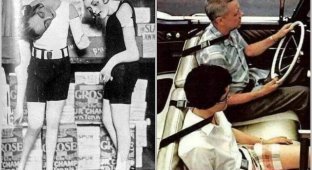A little about feminine hygiene of the 19th century and the “red days of the calendar” (8 photos)
And again, a small sketch about the life and customs of the 19th century. This time about a very sensitive hygienic topic and how the ladies of that time solved it. Some did nothing, some used a variety of designs. Modern comfort could only be dreamed of back then. 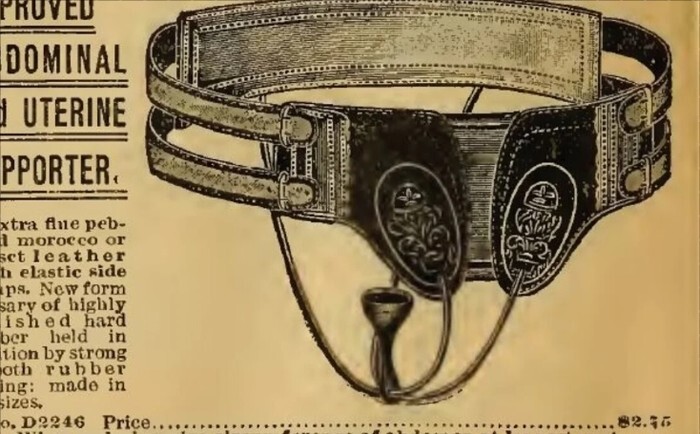
It is known that in the 19th century, women’s periods did not occur so often. Some researchers believe that due to dietary habits and living conditions in general, modern girls physically mature earlier and remain fertile longer. Previously, periods usually started later, and they happened less frequently and were less abundant. Yes, and regular pregnancies and breastfeeding. Some did nothing at all, everything was absorbed into multi-layered clothes, and the underwear was chosen in dark colors. Even then, some doctors were horrified by such unsanitary conditions. But poor city and peasant women were definitely not familiar with their treatises and scientific articles about this. In many workshops where women worked, the floors were prudently covered with straw, which absorbed ordinary dirt, and that too.
Medicine of that time often believed that at this time it was especially harmful for a woman to engage in mental activity, even just reading. But opinions differed about what could be done. Some doctors advised at this time to just lie down and sit back, and under no circumstances strain your brain. In his 1891 Women's Guide to Health and Disease, the English health reformer John Harvey Kello argued that the girl “should be relieved of all onerous duties and allowed to indulge in the feeling of malaise which usually takes possession of her at this period, let her rest on the sofa or spends her time as she pleases.” Alas, not everyone could afford this. Some advised, on the contrary, to still do housework or other activities that do not strain the brain. But in fact, if a woman worked hard on ordinary days, she worked hard on these too. In general, doctors of that time clearly did not know enough about female physiology. In 1878, the respected medical journal British Medical Journal seriously discussed with readers whether ham could spoil if touched by a cook these days.
Some sewed special belts, to which a long padding located between the legs was tied, and it was then washed. Ready-made belts were also sold in the 19th century. It is not known exactly when the first such products appeared, but their more primitive analogues were known long before the 19th century. On the other hand, the reusable design itself with a gasket in the form of a belt between the legs was officially patented only in the 20th century. Also in the 1850s, aprons that were located at the back were already actively sold. They became popular thanks to the beginning of mass production of rubber. The appearance of these products did not change much until the 20th century. It was problematic to secure anything to the underwear itself. At the beginning of the 19th century, women had nothing under several skirts and a shirt. Later, pantaloons appeared, but their style did not allow either. And he didn’t allow it, among other things, because the legs of the pantaloons were not completely connected, and there was a slit between the legs (therefore, the cancan was not such a harmless dance, but that’s another story). And some women, especially peasant women and bourgeois women, did not wear them by the end of the century, limiting themselves to undershirts and skirts. Ladies could place different absorbent materials on the reusable pad. These could be rags that were then washed, sponges, homemade pads made of fabric with moss, wool, even small wood shavings. Some ladies began to use medical bandages. It is believed that this was first thought of by nurses who used them as improvised means during wars, and the habit continued in peacetime. 

In the late 19th and early 20th centuries, knitted pads resembling washcloths and even “woolen diapers” were on sale. The knitted pads were reusable; the manufacturer suggested burning the diapers after use. They were uncomfortable and could chafe the skin. In 1896, one of the first disposable pads appeared on the market. They were known as Lister towels and were developed by Johnson & Johnson. By the way, Lister is a famous doctor who was considered an innovator in medicine. There were approximately the same Hartman towels that appeared in 1895. The photo below is just an advertisement for such towels, as well as diapers. There was no demand for sanitary towels. After some time, Kotex pads appeared, which were made from bandages and cellulose. It is believed that Kotex pads became more popular because ladies were embarrassed to buy such a delicate item at the pharmacy, and Kotex offered a convenient solution. They were simply displayed in boxes, and ladies could put money in there and take everything themselves without attracting attention. The name is a combination of the words cotton and texture. The new word should not attract the attention of men. You never know what kind of Kotex one lady recommends to another. 
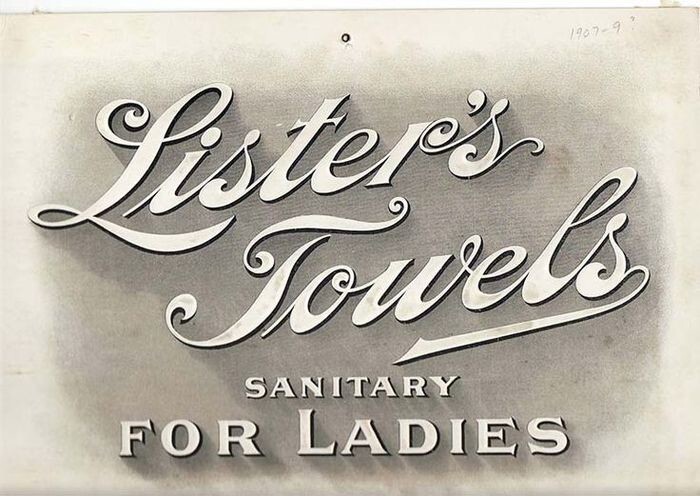
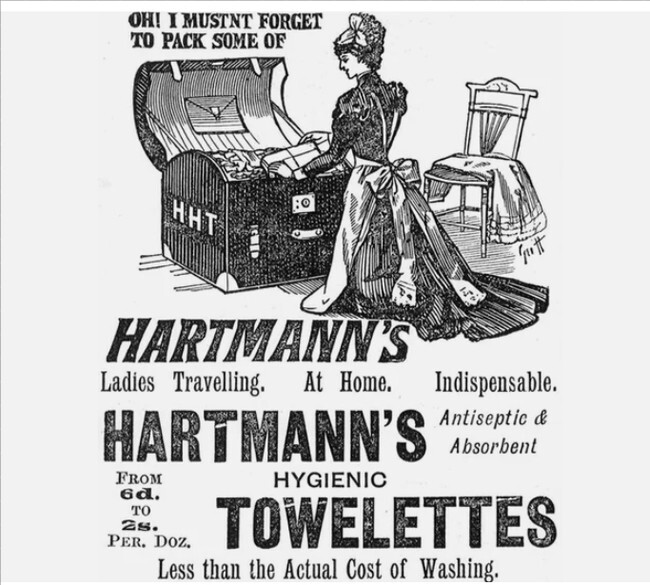
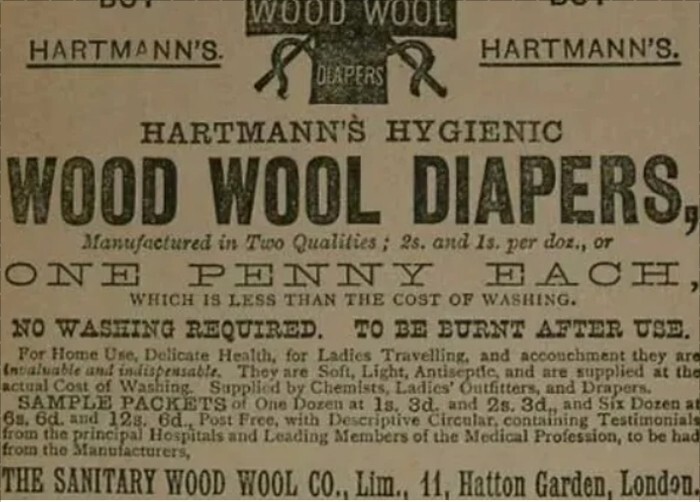
Menstrual cups were patented in 1867. They were very inconvenient and were not in demand. This is exactly what is shown in the very first photo. A similar design was also used as a medical device against uterine prolapse. Some ladies used sponges and other tampon predecessors for “internal” use. 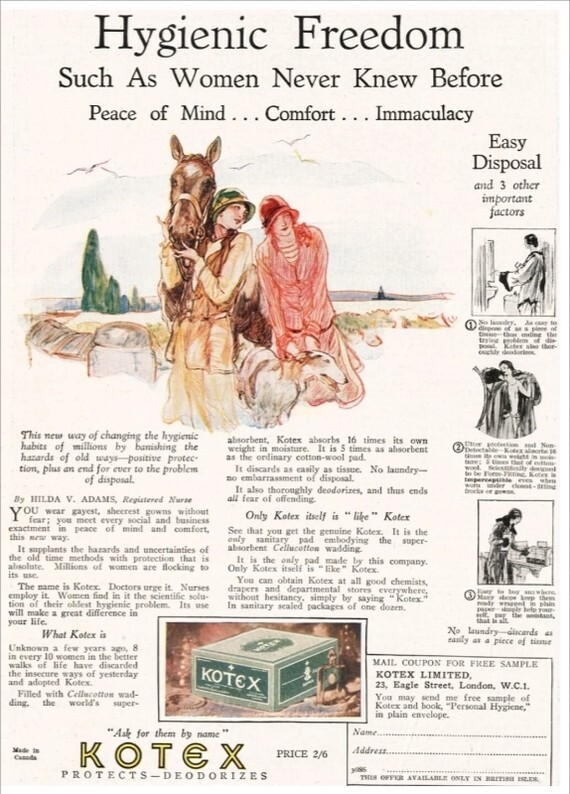
In 1929, Dr. Earl Haas patented a tampon close to the modern one. He developed a cotton plug that was inserted using two cardboard tubes and had a cord for removal. Well, then everything just got better.
By the way, it is noteworthy that for some reason almost all of the surviving advertising and product images are from English-language sources.












